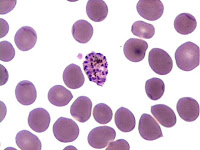While the American political
scene is apparently preoccupied with the upcoming Presidential election, an
enormous human tragedy has unfolded in the ancient city of Aleppo in
Syria. Some families living in Aleppo go
back to well over one thousand years.
It is now the site of destruction
of a horrific magnitude where hundreds of thousands of its residents are
trapped with limited access to food, water and medicine as the city is under going a siege by Russian and Syrian government forces under the direction of President
Bashar al-Assad. The Syrian civil war
has been raging since 2011 and in 2016 the United Nations determined that 13.5
million of the nation’s inhabitants were desperately in need of humanitarian
assistance with about 6 million internally displaced and some 4.8 million
refugees in other countries. Worldwide,
it is believed that there are currently over 60 million refugees who have been
displaced from their countries of origin on account of conditions that make
life apparently untenable.
The social, economic, religious
and political reasons for the violent upheaval taking place in Syria that has razed
the city of Aleppo and ravaged its citizens are complex and multi-dimensional. This
particular tragedy exposes the abysmal failure of the human kind to come to
grips with its apparent inability to fashion a human world where the peaceful
resolution of conflict is the preferred and necessary approach.
Given the nature of the human
condition and the inherent limitations of the human architecture, imperfection
and conflict will always be present. The
problem, however, lies within the way conflicts are resolved once they become a
reality. Human civilization has been
extant for at least ten thousand years; yet, the lesson has not been learned
regarding the absolute and abysmal failure of violence and war as an effective
response to conflict.
With the looming threat of
climate change beginning to overshadow any chance for an optimistic future for humanity,
it has become imperative that we learn how to effectively cooperate with one
another and learn quickly. Far too many
humans are suffering needlessly. This
suffering comes at an enormous cost to all of us. The ongoing tragedy of Aleppo is, in fact, a
tragedy for everyone as members of an allegedly sentient race of beings that
have the good fortune to experience life on this remarkable planet.



